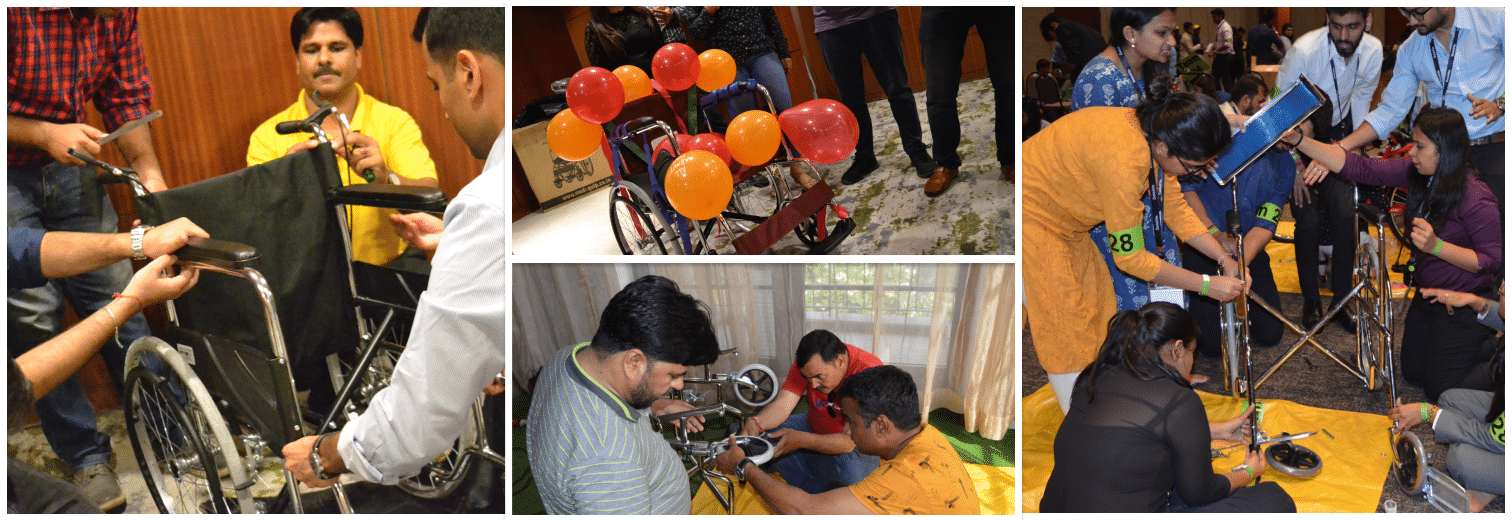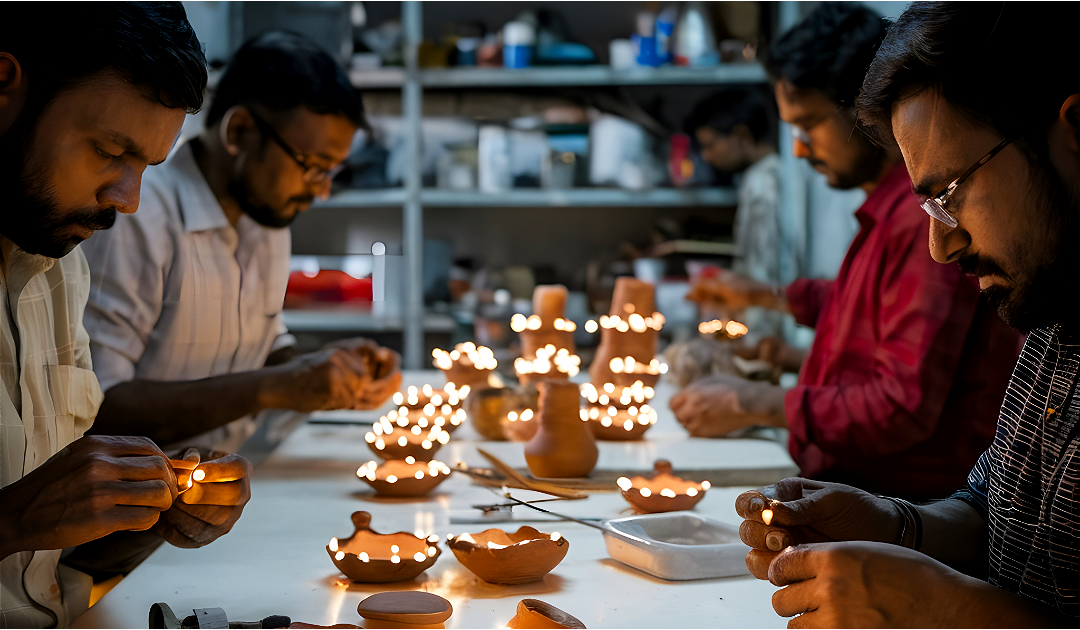Working at a startup often feels like a mix of freedom and chaos. I remember walking into my first startup job wearing a Batman t-shirt and sneakers I had bought during a trip to Manali. No raised eyebrows. No dress code. Just a creative space filled with ambitious people trying to build something meaningful.
But here’s the catch. That same informal culture comes with demanding work schedules, tight deadlines, and often, a very limited HR budget. Team members are expected to deliver at lightning speed, which can sometimes strain relationships and burn people out.
As someone who has worked closely with young teams, I’ve seen how important it is to balance the hustle with bonding. However, organizing fancy offsites or retreats is not always feasible. That’s why I’ve found that low-budget, indoor team building activities can be a game changer. They break the monotony, build trust, and foster collaboration without breaking the bank.
Here are five team building activities that I have either facilitated or personally participated in, all of which are budget-friendly, fun, and effective for startups.
1. The Domino Rally Challenge: Build One Small Thing Together
Table of Contents
The domino effect is one of the most fascinating principles of physics, and it reflects how things often work in organizations too. One small action can ripple through an entire system. When a team member shows up with a positive attitude or takes ownership, others tend to follow.
In this activity, team members use domino tiles or substitute items like matchboxes or playing cards to build a complex chain reaction that ultimately knocks down a final tile. The objective is simple: design a beautiful, functioning domino rally with creativity, teamwork, and limited resources.
This activity mirrors real-world cause-effect dynamics and is part of FocusU’s Indoor Team Building Workshops, where teams learn through hands-on collaboration and strategic thinking.
Why it works:
- Everyone has a role to play
- Requires alignment and precision
- Promotes communication under pressure
- Celebrates both the journey and the result
2. The Roller Coaster Challenge: Engineering Fun from Everyday Things
This one always brings out the inner child in people. Give your team a bunch of random items like straws, paper cups, cardboard pieces, tape, and string. Then, challenge them to design a roller coaster track that can carry a marble from start to finish using only gravity.
This may sound silly, but it is remarkably effective at tapping into engineering thinking, resourcefulness, and creative problem solving. It is especially relevant to startups that rely on innovation and iteration.
This challenge is inspired by FocusU’s Roller Coaster Challenge, which is designed to unleash creativity under constraints.
What makes it powerful:
- Encourages prototyping and iteration
- Demands communication and quick thinking
- Every failure is an opportunity to build better
- Brings excitement into a brainstorming session
3. LEGO SERIOUS PLAY: Small Bricks, Big Conversations
LEGO SERIOUS PLAY is one of those techniques that makes people go, “Really? We’re playing with toys?” But once they get started, the power of it becomes clear.
Originally designed for strategic leadership and organizational alignment, LEGO SERIOUS PLAY helps teams explore complex problems by building models using LEGO bricks. Each model becomes a metaphor, and the story behind it allows people to voice thoughts that might otherwise stay hidden.
FocusU offers LEGO SERIOUS PLAY as a facilitation tool for unlocking creativity and ensuring every voice is heard.
What makes it meaningful:
- Surfaces unspoken ideas or assumptions
- Levels the playing field by encouraging everyone to speak
- Visual metaphors deepen understanding and reflection
- Drives commitment through shared ownership
4. The Marshmallow Tower: Test Your Planning and Agility
This is a timeless favorite. Give each team 20 sticks of spaghetti, one yard of string, one yard of tape, and one marshmallow. The goal? Build the tallest freestanding tower that can support the marshmallow on top.
The trick is that teams often start building the tower without considering the marshmallow’s weight. This leads to collapse, last-minute chaos, and a critical lesson in planning, testing, and revising.
This activity can easily be paired with other design-based challenges in FocusU’s Experiential Learning Toolkit.
Why it’s a winner:
- Highlights the gap between planning and execution
- Encourages iterative learning and prototyping
- Creates hilarious, high-energy moments
- Costs almost nothing to organize
5. Two Truths and a Lie: Lighten the Mood and Build Trust
When deadlines are pressing and everyone is in serious mode, this activity can bring a refreshing change. Each team member shares two truths and one lie about themselves. The others have to guess which one is the lie.
It is a quick, low-pressure way to break ice, discover common interests, and spark laughter. At FocusU, we use this often in Virtual Team Building Programs as an effective way to build rapport, especially in hybrid or remote settings.
Why it builds better teams:
- Reveals personality traits and backstories
- Encourages listening and curiosity
- Improves interpersonal bonding
- Ideal for hybrid teams or remote-first settings
Why These Activities Matter
When you’re building a company, product, or team from scratch, relationships matter more than most people realize. You can hire the smartest people, but if they cannot collaborate, resolve conflict, or trust each other, your progress will stall.
That is why team building is not just about fun and games. It is about strengthening the human foundation that drives innovation, resilience, and adaptability.
These low-budget activities offer something that PowerPoint decks and Slack threads cannot. They create shared experiences. They build empathy. They turn coworkers into teammates.
Tips to Maximize Impact
If you’re planning to run these activities, here are a few things I’ve learned along the way:
- Keep it inclusive. Make sure everyone gets a chance to participate equally.
- Tie it back. Always reflect on what the activity taught the team.
- Don’t over-plan. Let spontaneity play its part.
- Document it. Photos and short videos build memory and culture.
- Celebrate effort. It is not about winning. It is about showing up and giving your best.
What to Watch Out For
Not every activity fits every team. Some teams love creativity. Others prefer structure. As a facilitator or team lead, tune in to what your people need most. Choose activities that challenge their comfort zone just enough to spark growth, not resistance.
And remember, it is okay if things don’t go perfectly. In fact, that’s often when the best learning happens.
Final Thought: Small Investments, Big Returns
Startups don’t need massive budgets to build great teams. What they need is intentionality. Creating space for play, exploration, and connection can yield returns that ripple across productivity, morale, and innovation.
If your team has been feeling overworked or disconnected, try one of these activities. Bring people together. Laugh together. Fail together. Build something weird together.
Because at the end of the day, the teams that play well together, work even better together.





